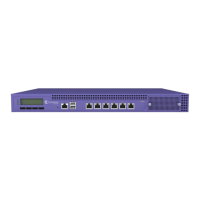Table 25: Advanced Radio Settings (continued)
Field Description
Radio Share Mode Radio operates as a sensor and a trac forwarder. Valid values are:
•
O. When the radio mode is set to O, the Radio Share capability
is disabled.
•
Inline. AP reports to the ADSP server only multicast / broadcast
trac such as beacons and probe requests. Inline mode has
minimal impact on AP performance, because the AP reports to the
ADSP server only trac that it processes.
•
Promiscuous. AP receives all packets seen on its operating channel
and forwards them to the ADSP server. Promiscuous mode loads
the AP resources, because AP has to process all trac in the
channel. In high-density, wireless deployments, use dedicated
sensors instead of Radio Share in Promiscuous mode.
Note: Set AP to Promiscuous mode when AP is required to
perform Termination.
ADDBA Support Block acknowledgment. Provides acknowledgment of a group of
frames instead of a single frame. ADDBA Support must be enabled if
Aggregate MPDU is enable.
Aggregate MSDU Determines MAC Service Data Unit (MSDU) aggregation. Enable to
increase the maximum frame transmission size.
802.11g protection mode Enable this rate limit to prioritize 802.11g (ERP-OFDM) transmission
allowing the 802.11g device to transmit unhindered. Protection is used
when the packet rate is greater than the configured protection limit
rate. For example, if the protection rate is set to 11Mbps, protection will
be used when sending at rates greater than 11Mbps, which means
802.11g rates.
To maintain compatibility between the older (802.11b (HR-DSSS) and
the newer 802.11g (ERP-OFDM) ) technologies, a mechanism was
devised to allow the older 802.11b device to understand the newer
802.11g device without significantly lowering the data rate of the
802.11g client. The 802.11g device sends an RTS/CTS frame sequence
(Request To Send/Clear To Send) that should be heard by all stations,
it may also use only "CTS-to-self." This sequence is understood by the
802.11b station that reads the duration field from the frame and sets its
NAV timer to hold o the medium until this timer expires. This allows
the 802.11g to transmit unhindered. An AP notifies all clients within its
service area that there are 802.11b devices present via a bit set in its
beacons. Note: It is the newer protocol (802.11g) being protected from
the older (802.11b) protocol.
The protection rate limit threshold determines when to use protection.
Minimum Basic Rate Defines the minimum data rate that must be supported by all stations
in a BSS (Base Station Subsystem):
•
Select 1, 2, 5.5, or 11 Mbps for 11b and 11b+11g modes.
Aggregate MPDU Max # of Subframes Maximum number of sub-frames of the MAC Protocol Data Unit
(MPDU) aggregation.. The value range is 2-64.
Configure
ExtremeCloud Appliance User Guide for version 4.36.03 77

